Some time ago I wrote about why you might want to consider keeping quail if you can't keep chickens. This raised quite a few questions, so I thought I'd go into more detail on them.
There are various types of quail, but the one I'll focus on is the Japanese, or coturnix, quail as this is the one I have most experience with and they are the most prolific egg layer with the largest egg. They aren't very long lived as quails go. They live an average of three years, whereas, a bobwhite quail, for example, will live 6-8 years.
How Do you Sex Quails?
Japanese quail come in a variety of colours. Some of which can be sexed by the different distinctive feathering.
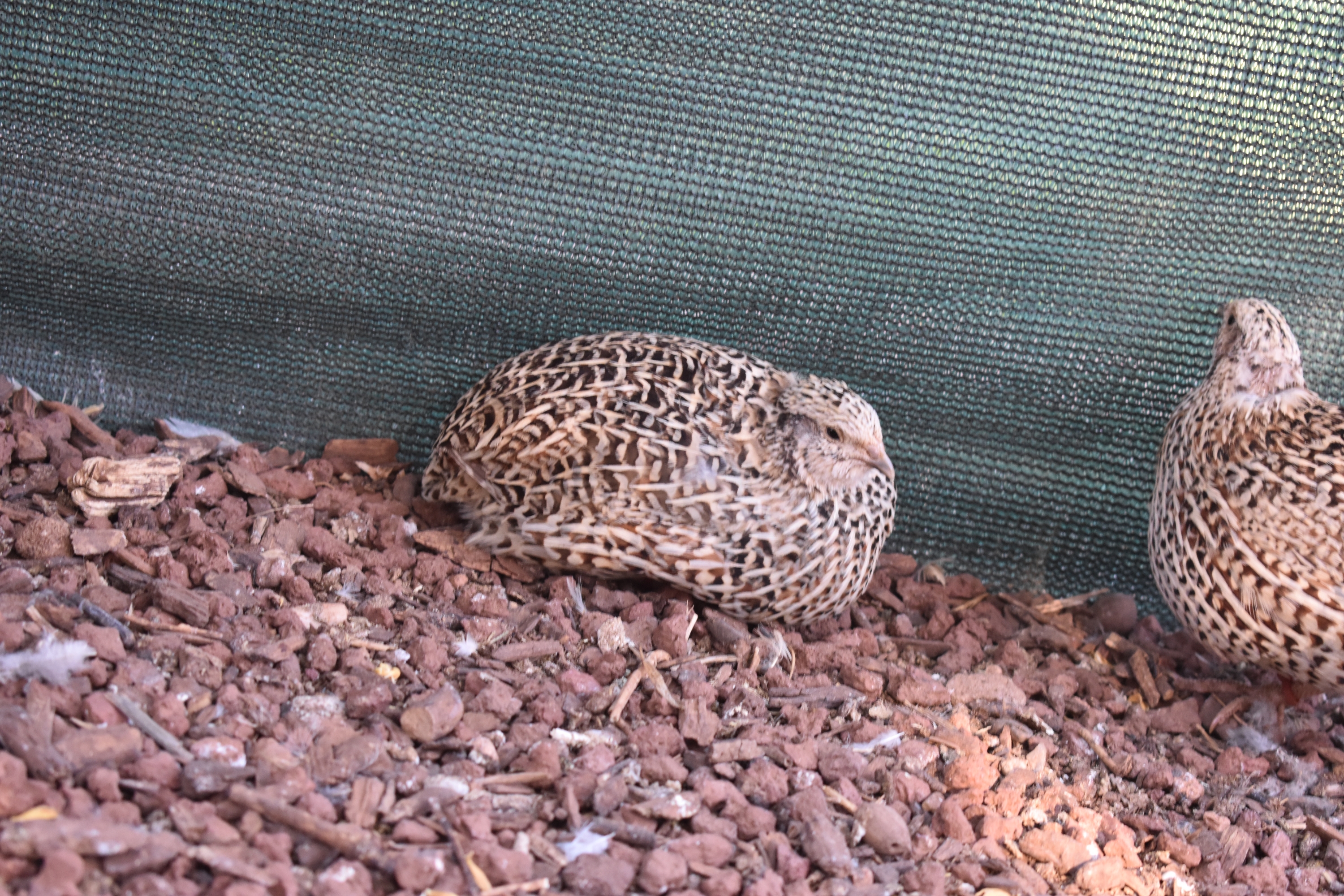
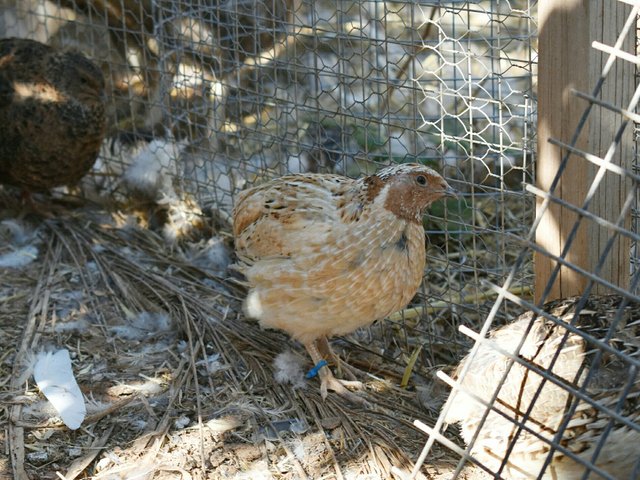
On the left are females with speckling on the chest and on the right is the male of this same type with a plain chest and the red/brown face mask. This face mask will be less distinct out of breeding season, but still visable.
However, some colours don't have an obvious difference between the sexes. The only sure ways to tell in this case is when they are in season (their season is dependant on the length of the days). Of course the females will lay eggs and the males will crow, but you have to catch them in the act. So a quicker way to find out would probably be to gently squeeze the vent and a male will produce a foam which carries the sperm. If they've been laying, the females will also have a distinctively wider vent.
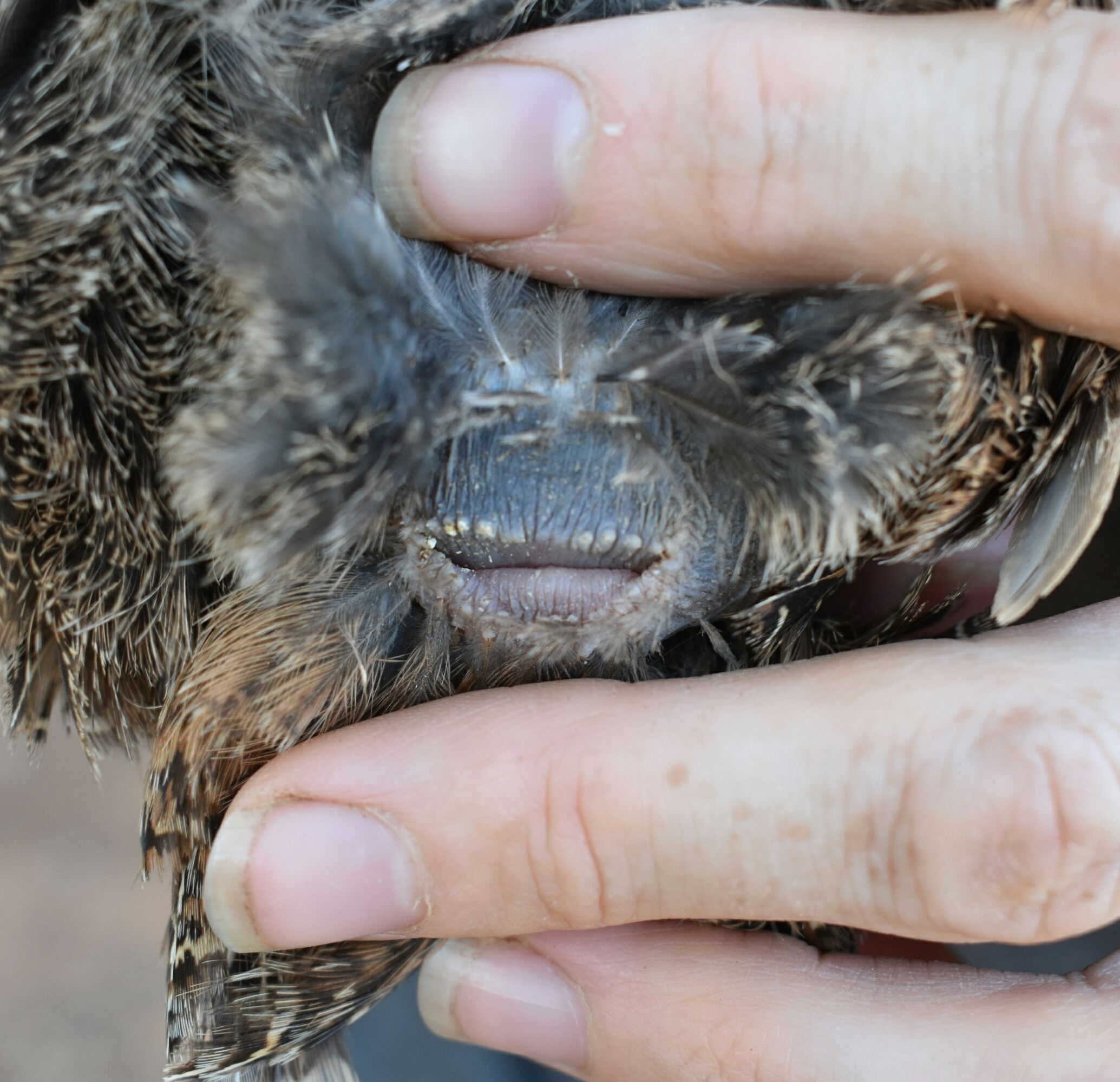
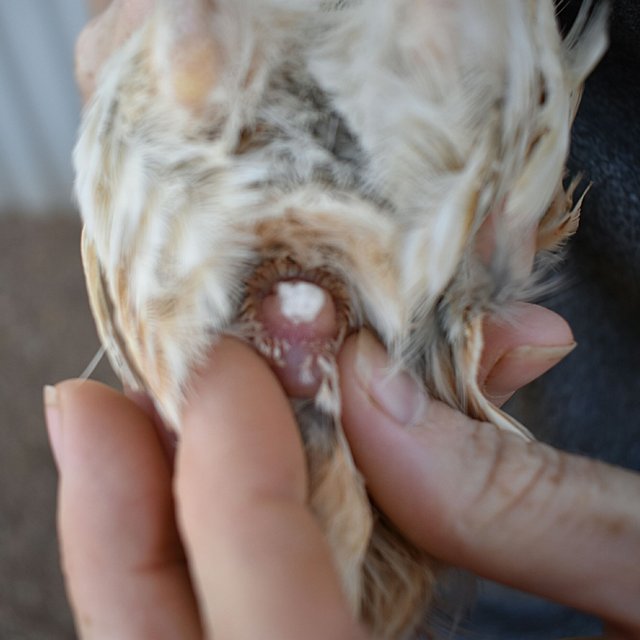
Female on the left and male on the right. Apologies for the blurry pic, virile quails don't like to be held or stay still! Hopefully you can see the foam though and that's coming from the swollen gland underneath the vent.
Housing and Feeding Quail
Keeping Japanese quail is similar to chickens, except they won't necessarily shelter at night and they won't roost. You could keep them as pets indoors or on something like a balcony or veranda in an old rabbit cage. They'll only need about the area of an A4 piece of paper per quail. I would recommend a highly absorbent material to line the cage that they can also scratch around in, such as wood shavings. They can quickly start to smell otherwise. You could also use sand or a soil sand mix which would work as a dust bath too. If you use wood shavings then having a separate dust bath is a good idea.
If you're keeping them outside, then just look at something fully enclosed which is predator proof for them. Unfortunately free ranging them is not ideal as they are liable to fly over the fence. They don't have a sense of home like chickens do and they are also a target for a lot more predatory birds than chickens are.
Quail can be surprisingly hardy or incredibly fragile. I’ve watched them being rolled around like little footballs in stormy weather and found them all in good health the morning after. They won't take shelter from anything but the hottest sun. They aren't graceful and when they take off, landings will usually be rough. Most of the time they come out fine, but sometimes they will end up with broken or dislocated toes, feet or legs. Stress can cause sudden death, but what kills one won't faze another.
When planning out the quail enclosure try to avoid small gaps that they might get stuck in, because you can guarantee one will get stuck in it! Bear in mind that they will take flight in an uncontrolled way and land in the least expected places. We have an arched shelter and it was too close to the fence. Twice we had a quail get stuck on its back between the arch and fence, presumably after landing on the arch and sliding down. One wasn’t there for long, but died and the other was there for quite a while. It was hungry and thirsty when I found it, but didn't seem too perturbed by its situation otherwise. These days I make sure to leave a good gap around everything and check on it regularly in case it's shifted.
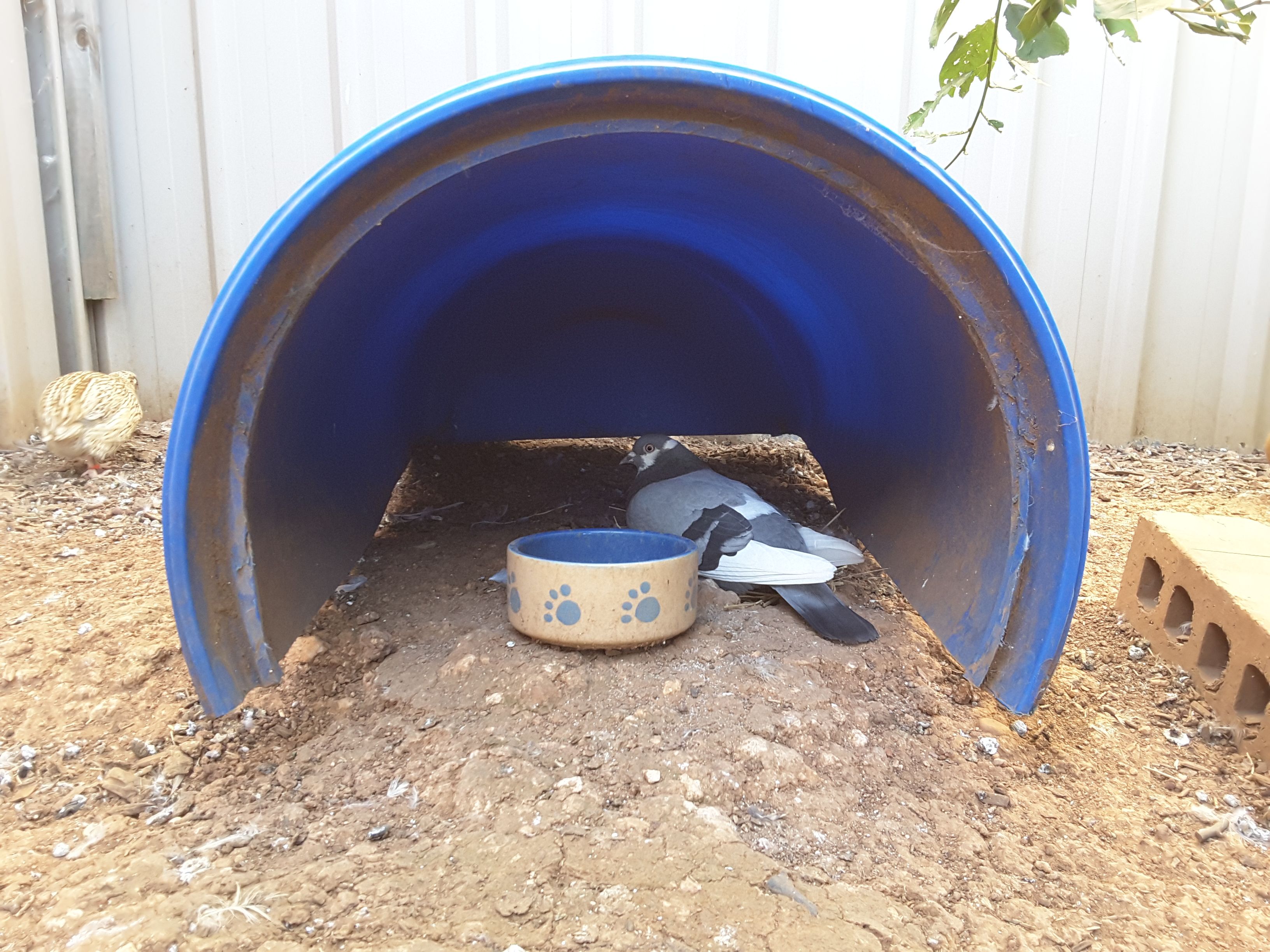
Yes, that's a pigeon under the shelter and she's nesting on the floor like a quail!
Access to fresh water is, of course, a must and feed wise you can get a complete game bird feeder which provides for their high protein needs. However, I feed them the same as the chickens just with a larger portion of the high protein pellets.
How Noisy Are They?
If you're keeping quail indoors or with close neighbours in earshot then the question occurs of how noisy they are. Females are for the most part quite quiet. They will make little chirruping sounds, but occasionally they'll raise their voice a bit if they get separated from companions. Males will make chuntering sounds to call females over for food and they will crow. It depends on the quail as to how loud that crow is. Some have very soft, gentle crows whereas others belt them out. However, the loudest crow is by no means as loud as a chicken rooster crow and I've heard other types of quail are also much louder. If you want to know what a typical coturnix quail crow sounds like there's one at the end of this video. He's a loud crower.
Apparently they can be loud enough to bother close neighbours. I have friends who've told me they've had complaints about their quail crowing. Some will even crow through the night. Generally they stop crowing when the days shorten in winter, or at the very least crow much less.
Just like with chickens, you don't need to have males for the females to lay eggs, so you'll only need a male if you want to breed them. If you don't want to breed them, then stick to females and you should have no noise problems. However, if you do want to breed them then you might be able to select quieter males. Sound muffling with brush, fences and walls could also be an option.
So What About Their Eggs?
Their season under natural light is roughly spring and summer. They need a certain amount of light to trigger their hormones to get the females laying and the males busy. This can be achieved with artificial light. Our pet, house quails will lay year round and when we had a male in with them he would eagerly be on the job year round. The moment the curtains opened in the morning that was his first priority!
When they are laying, they lay almost daily, so you can end up with a lot of eggs, sometimes too many! Approximately 6+ quail eggs will be needed to match the weight of a chicken egg. They are a bit more fiddly than standard eggs with a higher chance of a bit of shell getting into what you're preparing. If you have the patience, though, they are just as good and even said to be more nutritious than chicken eggs.
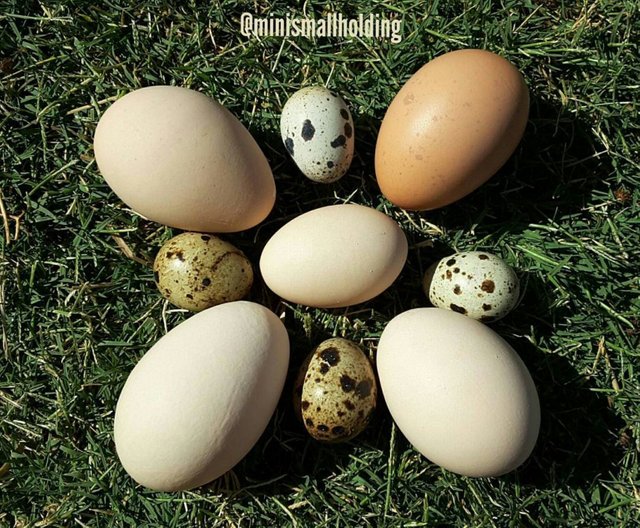
The speckled ones are Japanese quail eggs. In the centre is a small bantam egg surrounded by standard/medium chicken eggs.
Some Final Thoughts and Answers
Coturnix quail are not as intelligent and interactive as chickens, but some can be happy to be handled.
I often get asked if you can eat quail or if we eat the quail and the answer is yes. We breed them and just like with chickens you'll get 50% males on average. This ratio of males will lead to fighting and hens being killed. So we select the breeding stock and prepare the rest. I won't kill for the sake of it, so we use them for food.

Unfortunately, I lost my few quail when a young owl got into my enclosure and had them neatly stacked up in a headless pile by the time I found it in the morning. A handsome bird it was, but a disappointing find.
I must get some more eggs to incubate and start afresh (I have chickens though, the quail were an experiment.)
One thing I found with them is the almost kamikaze-type way they like to drown themselves in their water when they are very young. I tried to counter this by putting marbles in their water bowl so they had to drink around them and not just lay in the water to drown. I'd be interested to know how you overcame this?
Downvoting a post can decrease pending rewards and make it less visible. Common reasons:
Submit
Erk! Did you keep the owl? ;) It's hard not to respect a bird like that, even if it did carefully prepare your quails.
I've always done the marble thing with water bowls from starting with chicken chicks, so I haven't had them drown. However, I can imagine they would as they do like to stand around in the water bowl and will have a good dig too. When I put fresh water in I can hear the marbles rattling as they all drink and dig! Crazy things really! Not the brightest birds are they?
Downvoting a post can decrease pending rewards and make it less visible. Common reasons:
Submit
Funnily, I did think of keeping the owl... but he was stressed at realising he couldn't get out again and I had no quail left to feed him :-P.
Coaxing him out was fun though! I was pleasantly surprised to have him briefly land on my arm on his way out, and also left in pain by the talon cuts that came along with that... man those things are sharp!
As for the quail, they are cute but as you say I'd never hand one a Rubrics cube :-)
Downvoting a post can decrease pending rewards and make it less visible. Common reasons:
Submit
How on earth did he get in if he couldn't get out again? Reminds me of when the sparrows find a way into the enclosed runs, but can only come our via the gate.
Downvoting a post can decrease pending rewards and make it less visible. Common reasons:
Submit
My fault I'm afraid, but a similar tale. In the open area I only had netting for the roof of the area as I figured if the quail took off startled straight up, they would not be hurt.
Unfortunately, during the night/early morning the owl must have seen them moving and got through it, only to not see the entry/exit point once in side.
I swear I keep doing things with the best intentions and something happens and I have to start again. Its a lesson in frustration and wasted time, but a valuable lesson nonetheless :-P
Downvoting a post can decrease pending rewards and make it less visible. Common reasons:
Submit
Love the colorful eggs. LOL
Downvoting a post can decrease pending rewards and make it less visible. Common reasons:
Submit
They are pretty special looking. Which is probably why I like making pretty patterns with them! 😁
Downvoting a post can decrease pending rewards and make it less visible. Common reasons:
Submit
This is a great post @minismallholding. I think you've done a fab talking about the basics of raising quails but at the same time providing some good insight into the characteristics of these birds. I've not seen others do this but I think that knowing what they are like to live and interact with on a daily basis is really important for people considering keeping them. I had no idea these animals were so 'goofy', is that the word Im looking for here? They sound fun to have around. And lol to your male quail story. I liked that addition.
Downvoting a post can decrease pending rewards and make it less visible. Common reasons:
Submit
'Goofy' is actually a really good description! Goofy little feather balls! Which has just reminded of this:
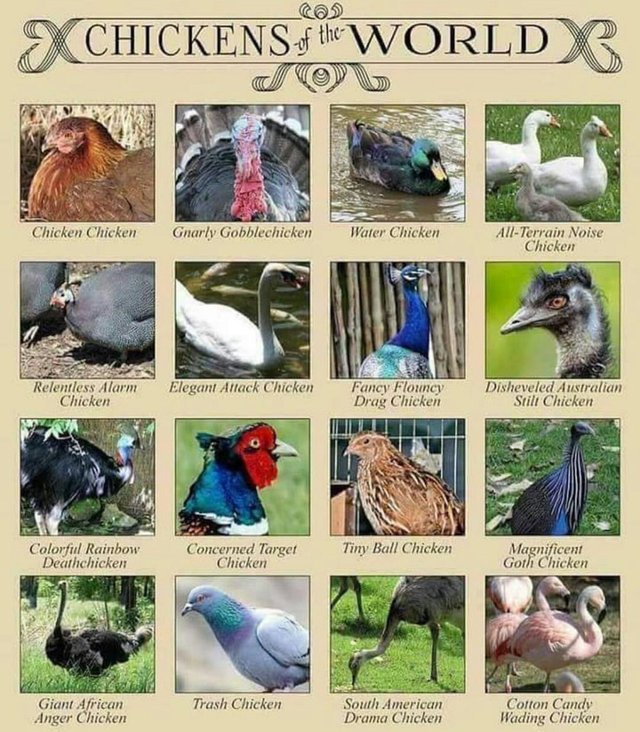
Downvoting a post can decrease pending rewards and make it less visible. Common reasons:
Submit
We had quail for a while but it was an unsuccessful venture. Kept pecking each others eyes out...
Downvoting a post can decrease pending rewards and make it less visible. Common reasons:
Submit
Ouch! I've had males damage each others eyelids in fights, but never eyes out!
Downvoting a post can decrease pending rewards and make it less visible. Common reasons:
Submit
Wow their eggs make chicken eggs seem huge! I didn’t realize how small bantam eggs were either.
Downvoting a post can decrease pending rewards and make it less visible. Common reasons:
Submit
It depends on the bantam. The one in the picture is from a cross breed of a Japanese bantam which is the smallest breed we can get in Australia. My araucana bantam lays one which is between the size of that and a standard egg.
Downvoting a post can decrease pending rewards and make it less visible. Common reasons:
Submit
Interesting. I'd like to try chickens, but my wife has a thing about mice; and apparently the two are pretty much inseparable.
Downvoting a post can decrease pending rewards and make it less visible. Common reasons:
Submit
Sadly, you'll get mice as long as there is anything for them to eat and that includes the veggies you're growing. You might not want to mention that to her if you're planning on growing more edibles. ;) We had mice even before we had chickens... and no they weren't pets! The rats moved in when the new neighbours got a dog and fed it outdoors. They found nothing to eat in our chicken runs so they ate the cauliflowers and the apricots. We ended up having to bait them in the end as we knew we'd get the blame if they carried on multiplying.
Downvoting a post can decrease pending rewards and make it less visible. Common reasons:
Submit
Any cat or dog breeds useful in that regard?
I know Jack Russell's are ratters.
Downvoting a post can decrease pending rewards and make it less visible. Common reasons:
Submit
Yes, Shaun used to take his Jack Russell ratting. He says any terrier would be a good ratter, just not a Yorkie lol!
Don't you have a dog? What type is yours?
Downvoting a post can decrease pending rewards and make it less visible. Common reasons:
Submit
He's a moron X dipshit.
He couldn't catch an uber.
Downvoting a post can decrease pending rewards and make it less visible. Common reasons:
Submit
🤣🤣😂😂
So not a ratter then?!
Downvoting a post can decrease pending rewards and make it less visible. Common reasons:
Submit
Mini foxies are good on rats.
Downvoting a post can decrease pending rewards and make it less visible. Common reasons:
Submit
"He's a moron X dipshit. He couldn't catch an uber."
Lol! Comment of the day.
Downvoting a post can decrease pending rewards and make it less visible. Common reasons:
Submit
Very detailed article on quail. I have thought of raising some. I live in the Philippines. Always warm and lots of light. I wonder what type of quail would be optimal for this climate?
Thank you!
Downvoting a post can decrease pending rewards and make it less visible. Common reasons:
Submit
All quail seem to adjust well too most climates. You could probably just have a look what is available where you are.
Downvoting a post can decrease pending rewards and make it less visible. Common reasons:
Submit
Downvoting a post can decrease pending rewards and make it less visible. Common reasons:
Submit